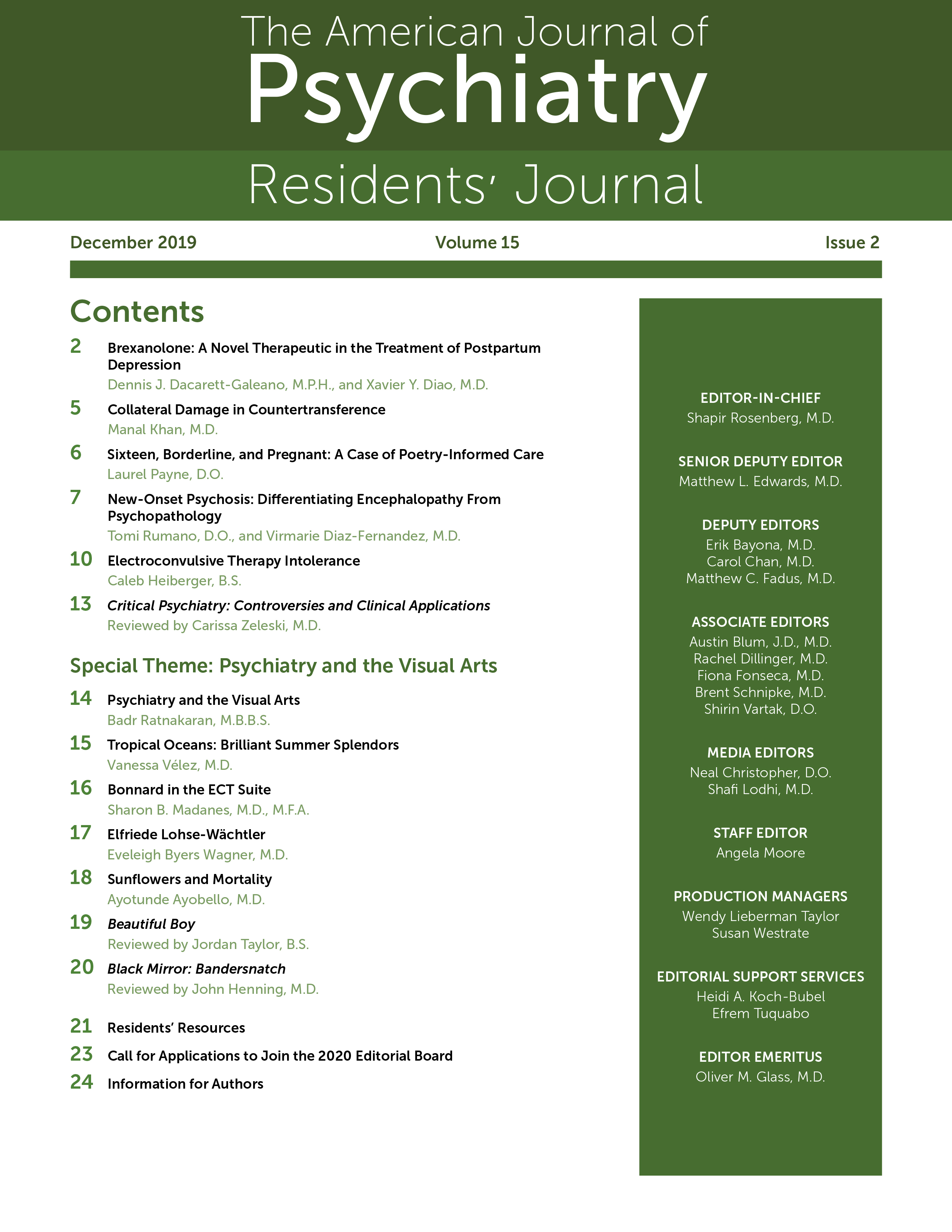Welcome to this special theme section of the
American Journal of Psychiatry Residents’ Journal devoted to psychiatry and the visual arts. Mental illness and distress have traditionally occupied a prominent place in the arts. Narratives of mental disorders, healers, and therapies have all been depicted in art. Art has been used in research on and treatment of individuals with mental illness in asylums and other settings (
1). The power of art has also been harnessed for purposes of psychiatric education.
Consider expressionist artist Edvard Munch’s "The Scream," a ghostly depiction of a face in extreme anxiety, which was created in 1893. This curvy humanoid with a skull-shaped head and nondescript facial features is perhaps one of the most recognized depictions of nature’s agony. Why did Munch decide to draw the emotion depicted by the figure in "The Scream"? What is the context of the intense angst depicted in the painting and Munch’s perception of it? Many art historians and scholars believe "The Scream" was an end product of the turmoil in Munch’s life and an expression of his severe anxiety (
2).
The use of such art in psychiatric education serves many purposes. Art can enrich empathy for those we treat by deepening our understanding of their subjective experiences (
3). Cinema in particular is a powerful medium to demonstrate psychopathology, negative stereotypes, and stigma toward mental illness (
4). Furthermore, film conveys the often complicated and protracted course of mental illness. Consider
A Beautiful Mind (2001), a drama based on the life of Nobel laureate John Nash, whose mathematical genius was limited by his struggle with schizophrenia. The film’s narrative helps us appreciate Nash’s psychological distress and understand how schizophrenia affected his professional life and personal relationships.
In addition, the presentation of psychiatry and mental illness in visual art over time may shed light on shifts in cultural views of mental illness. For example, William Hogarth’s "A Rake’s Progress" (1735), a painting depicting the 18th-century Bethlem Royal Hospital, demonstrated the poor and often inhumane treatment of people with mental illness in the past.
The authors for this special section theme have contributed articles ranging from film reviews to commentaries on paintings related to mental illness. I commend their efforts and thank them for creating an enriching and engaging edition for our readers. Enjoy!
